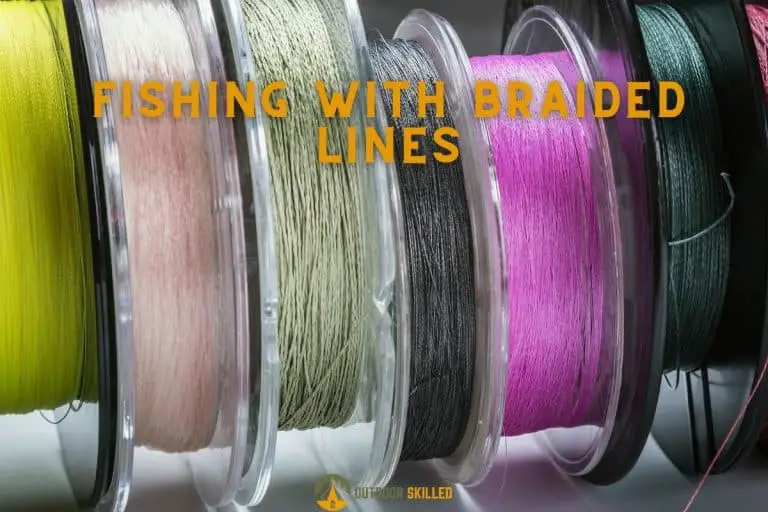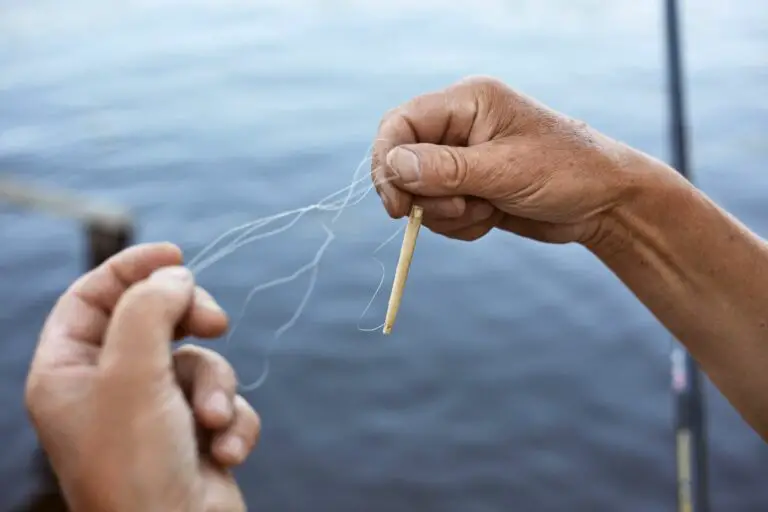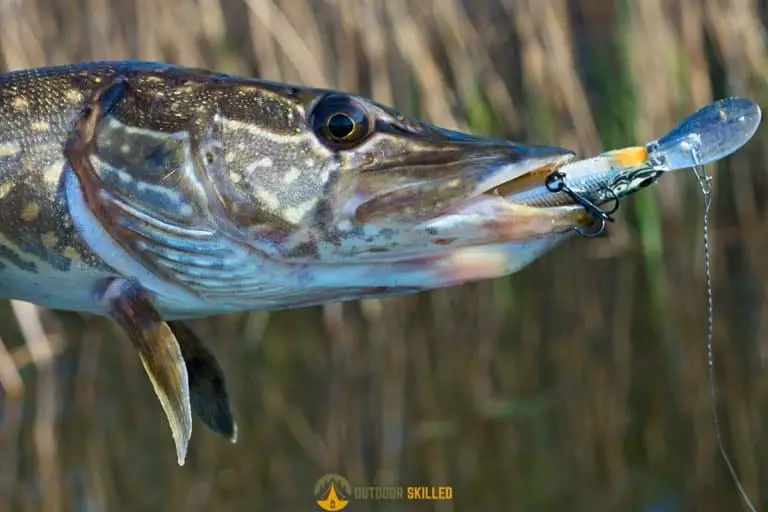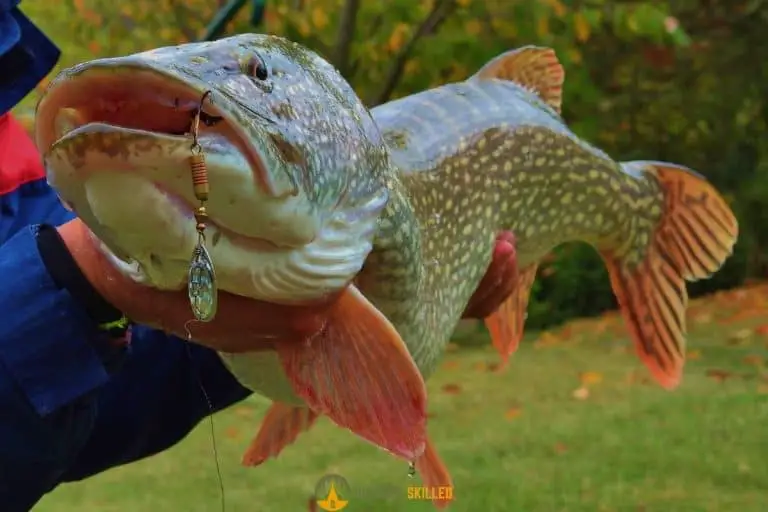What Fishing Line Has The Least Memory? Here’s How to Choose
Fishing lines are designed with specific properties that enable them to catch fish. These characteristics include resistance to abrasion, durability, thickness, and flexibility.
These properties can be challenging to manage, especially flexibility, often known as memory or fishing line memory.
Lines with low memory are considered slack, while lines with high memory are considered stiff. Yet, some anglers prefer to use lines with little to no memory, even if they are considered slack.
So, what fishing line has the least memory? Braided fishing lines have the least memory of all types of fishing lines because of how they’re manufactured. They have a thin diameter which means they will remain flexible. Having little to no memory also makes braided lines less prone to tangling.
Read on to discover more about fishing line memory and get some recommendations for the best fishing lines with the least memory.
Table of Contents
What Exactly Is Fishing Line Memory?

Usually, the fishing will set when they’re coiled around the spool of a fishing reel, especially if the line is kept in that coiled position without use for some time.
The longer the line stays in a coiled position, the more obvious the set will be and the more difficult it will be to deal with.
By the time you take the line off the spool, you will notice that there’s a lot of curling which is known as the memory of the fishing line. This curling can affect your casting negatively as it will shorten the casting distance and accuracy.
What Causes Fishing Lines to Have Memory?
Line memory is something we will have to cope with as anglers, so it’s essential to learn what causes fishing lines to have memory in order to reduce the problem as much as possible.
Factors that cause fishing lines to have memory include:
- The Material of fishing line
- The thickness of the Fishing line
- The covering coat of fishing line
- The age of fishing line
What Fishing Line Has The Least Memory?

Having the correct line is critical for a successful and enjoyable fishing trip. Certainly, qualities like the thickness, color, and kind of fishing line are essential, but many overlook fishing line memory.
High line memory can result in some issues when fishing, so it’s essential to consider the degree of memory in the fishing line when choosing your gear.
As mentioned before, the degree of line memory varies based on the thickness of the line, the manufacturing technique, and the material.
So, let’s take a look at the main types of fishing lines and the degree of memory each one has.
Braided Fishing Line
If you want a fishing line with zero line memory, a braided fishing line is the one you’re seeking.
The braided fishing line material is manufactured by braiding polyethylene strands together. The number of strands might be anything between four and sixteen.
One of the qualities that differentiate the braided fishing line is that it has almost no memory and does not stretch. This allows you to be precise with your casting, making it ideal for deep-sea fishing.
The braided fishing line still has some drawbacks, as it’s highly visible underwater. It’s also challenging to knot and relatively expensive.
It has been widely used for a long time as it combines durability and slimness. You can check out my recommendations for the best braided fishing lines here that are truly the best value for your money.
You can also learn more about when to use a braided fishing line.
Monofilament Fishing Line
The monofilament fishing line has low to medium memory.
It’s unlikely to coil or become twisted out of form. It’s also ideal for detecting light bites and managing the casting distance, accuracy, and retrieval speed.
However, it still has drawbacks as it’s not very durable compared to other lines, but it offers some impact and resistance properties. Learn more about the pros and cons of monofilament lines as well as my recommendations for the best Monofilament fishing lines here.
Fluorocarbon Fishing Line
Compared to other fishing lines on the market, fluorocarbon fishing lines have the highest line memory.
It’s the most prone to tangling and coiling. It’s also more challenging to manage when it comes to casting distance and accuracy.
There have been significant efforts to reduce the Fluorcarbone line’s memory throughout the years, but despite the enhancements, the high line memory remains a considerable disadvantage for this line.
Fluorocarbon lines still have their own advantages that make them an excellent choice for many anglers, and you can learn about the pros, cons, and uses of Fluoro in this guide to the best fluorocarbon fishing lines.
Tips To Reduce Memory in Fishing Lines
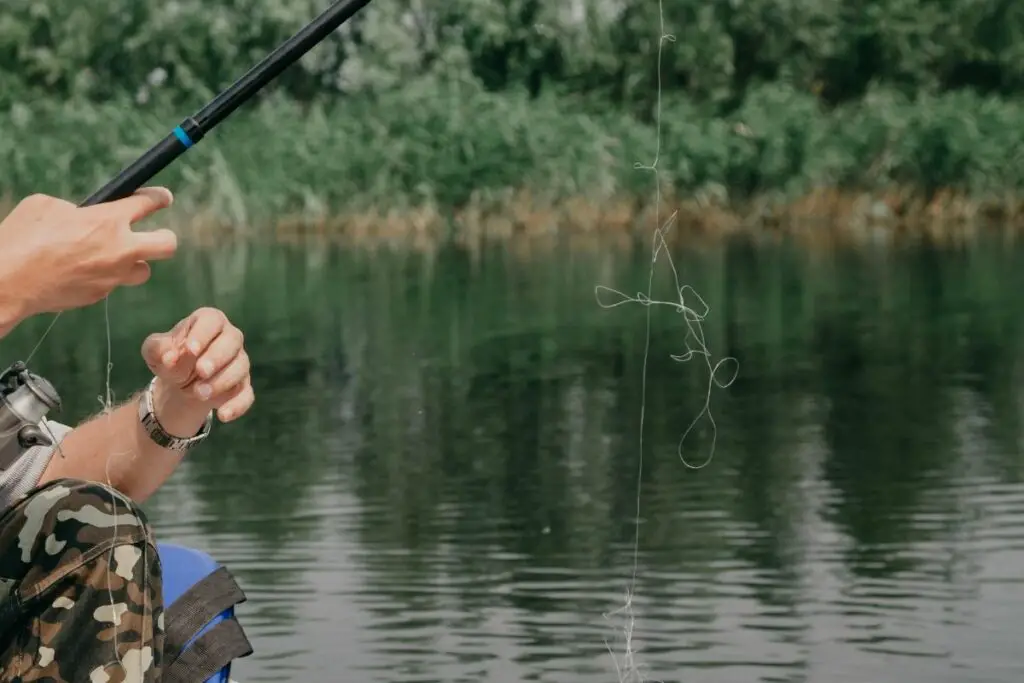
There have been numerous advancements in reducing line memory throughout the years, but you may still stumble upon a fishing line with high memory.
So here are some tips that will help you reduce fishing line memory:
- Stretching the line
- Soaking the line in hot water
- Replacing line regularly
- Investing in a good quality line
The Best Fishing Lines With Low Memory
If you’re having difficulties deciding, we’re here to help you find the greatest low-memory fishing line available on the market.
KastKing World’s Premium Monofilament Fishing Line

KastKing mono offers low memory. In addition, it is manufactured with Paralleled Roll Track technology, which means it has more reel capacity and is simpler to handle and cast!
RUNCL PowerFluoro Fishing Line

This line’s constant thickness, minimal stretch, and hypersensitivity allow you to feel even the slightest nibble from a fish.
Berkley Trilene Sensation Monofilament Fishing Line

It is one of the greatest lines available in terms of memory.
It won’t lose form or coil, improving casting distance and making recovering your line easier.
Berkley Trilene XL Monofilament

It also has a very low memory, which means it won’t coil or adopt an unusual form, and it makes casting and retrieving effortless.
KastKing FluoroKote Fishing Line

In terms of memory, this is maybe one of the lowest memory lines available, so it will never twist or become entangled on your reel.
Related Questions
What Is a Monofilament Fishing Line Made of?
A monofilament fishing line is made of nylon formed in a single, continuous filament and left uncoiled. It’s also known as mono line and it’s the most widely used type of fishing line as it’s the simplest to use.
What Are the Advantages of Monofilament Fishing Line?
The advantages of the Monofilament fishing line include being simple to use for most applications and with all reel kinds. It’s also flexible and inexpensive compared to other lines, which highly contributes to its popularity.
Helpful Resources
Different Types of Fishing Line Explained
These Are The Fishing Lines I Absolutely Love
- After Testing endless brands and varieties, these are the best Fluorocarbon lines, these are the best Braided lines, and these are the best monofilament fishing lines.
- These are the best Ice Fishing Lines for your money
- These are the fly fishing lines that have never let me down.
- Targeting Trout? These are the best fishing lines for trout. For Bass, use these bass fishing lines.
- Not sure which fishing line to use? Check out these comparisons:
- Going Crappie Fishing? These Crappie Fishing Lines outperform everything else (and their price!)
If you like this article, please share it or pin it, you can find the share buttons below. We will really appreciate it ❤️


